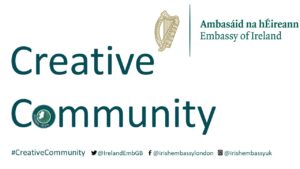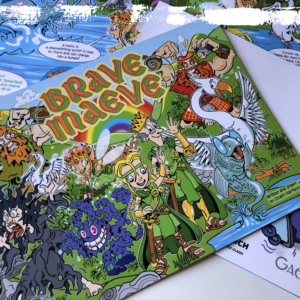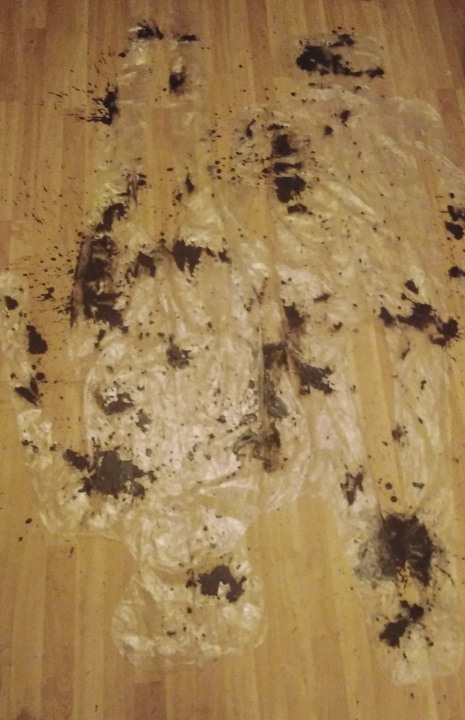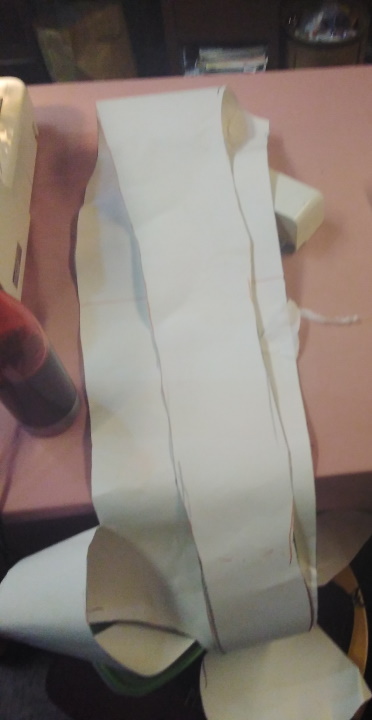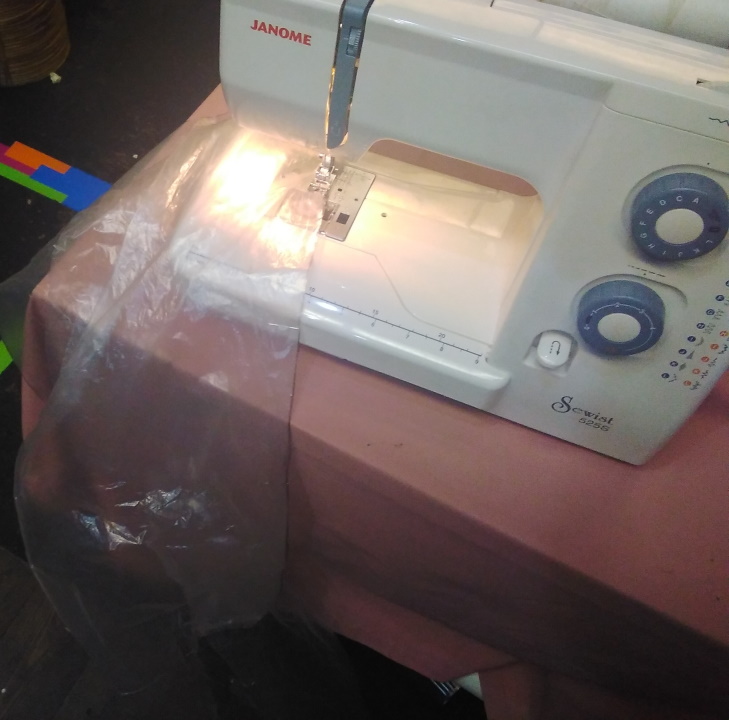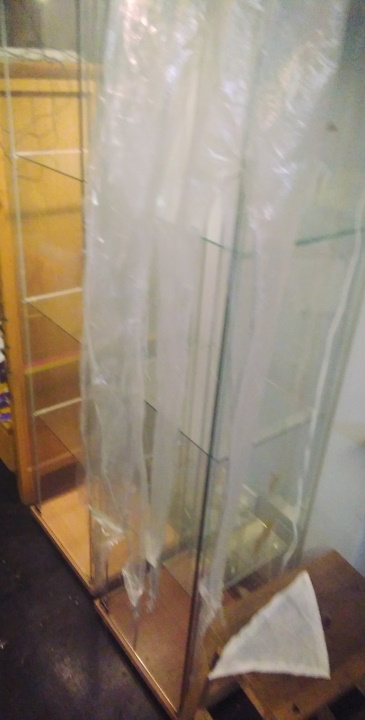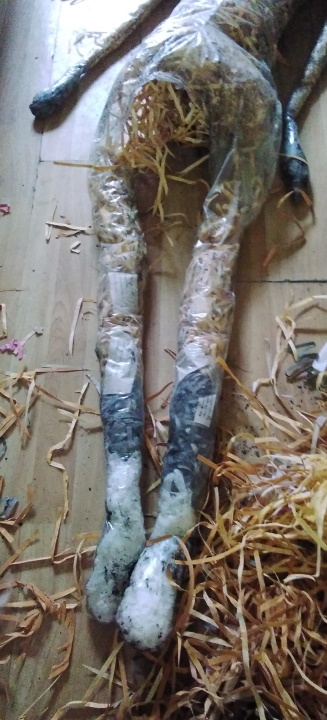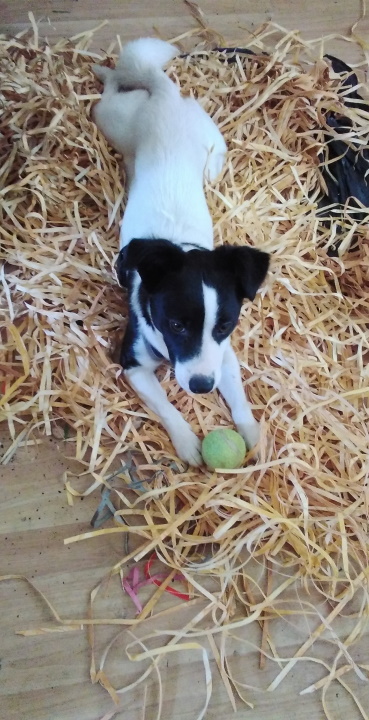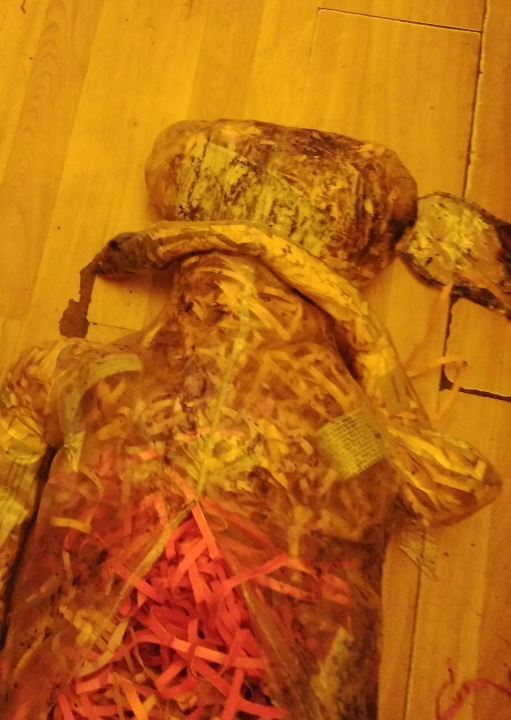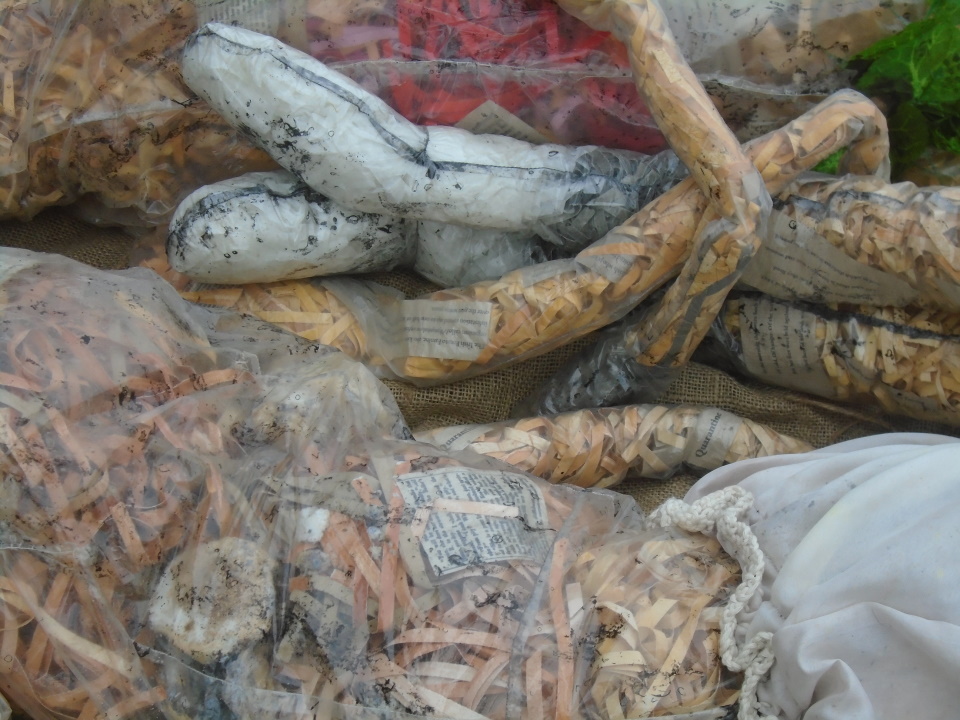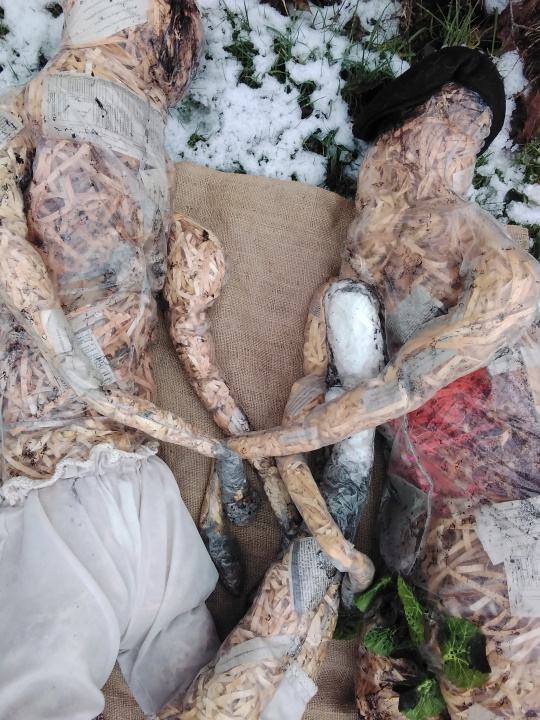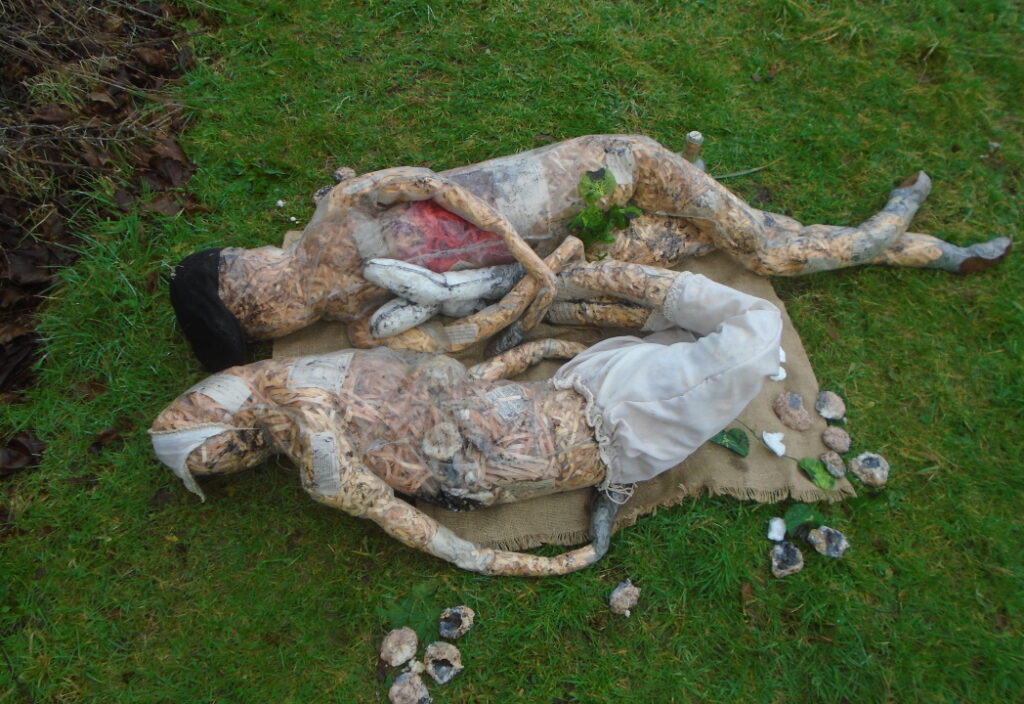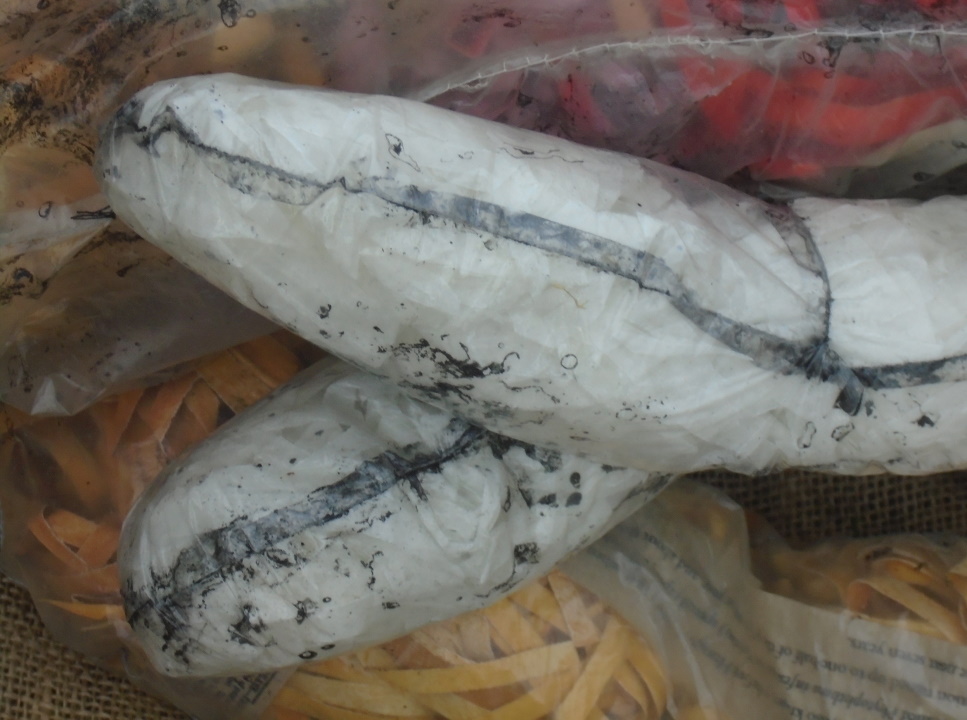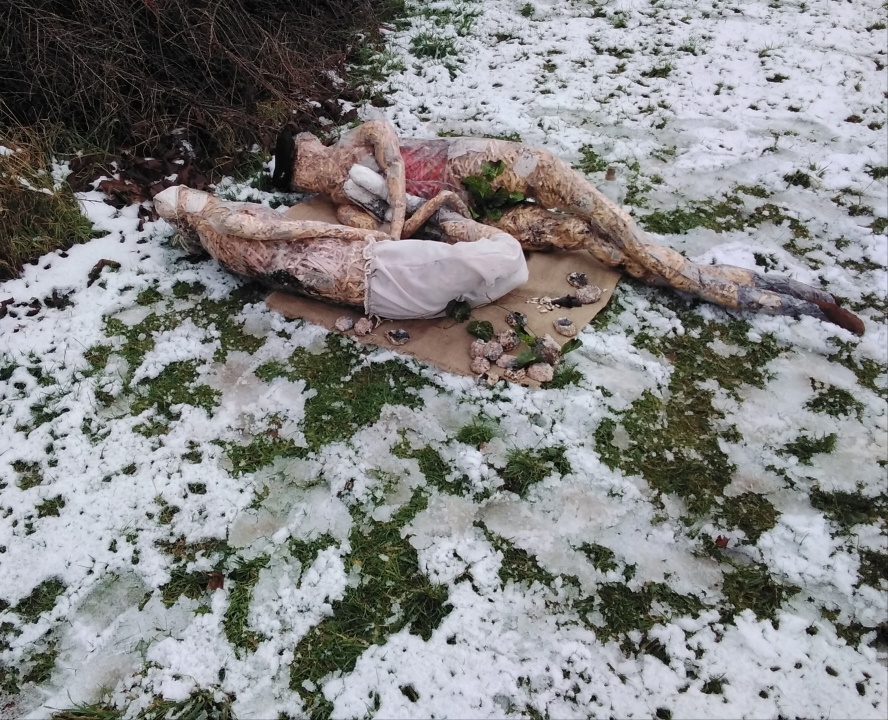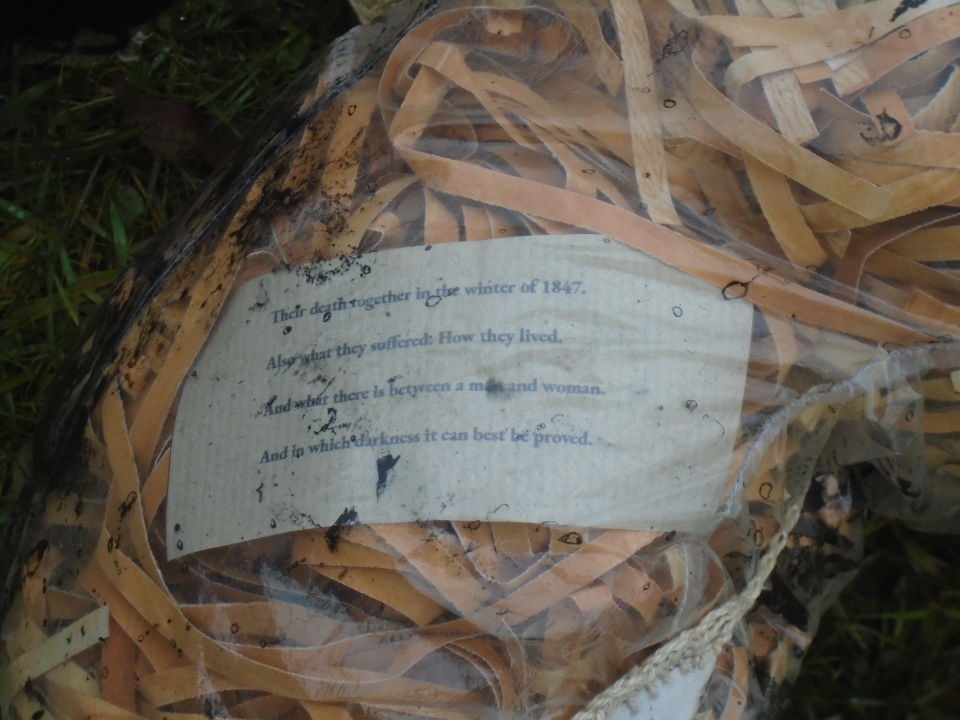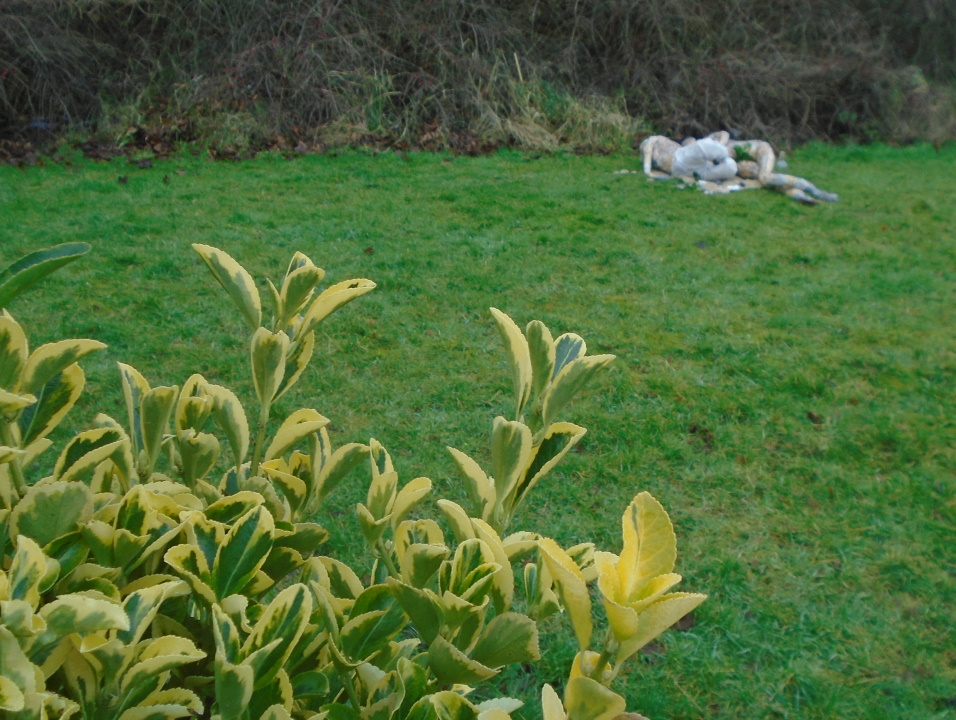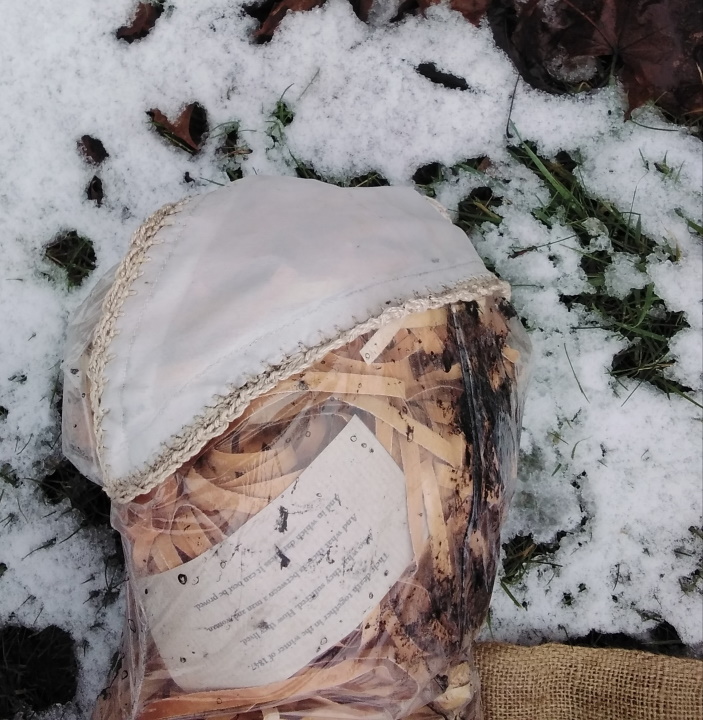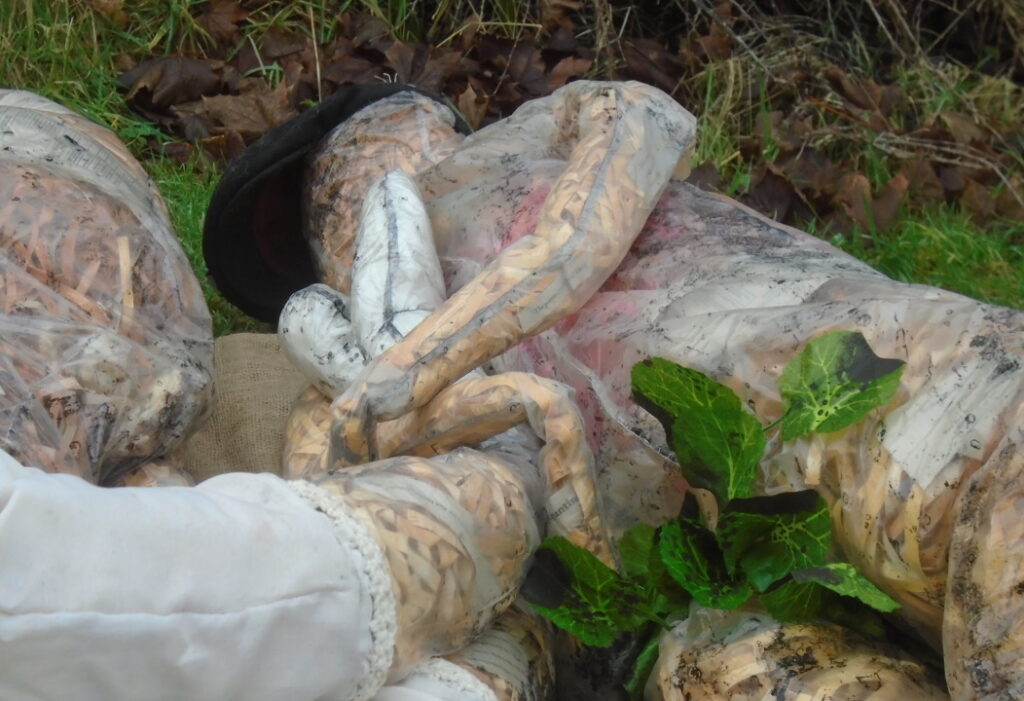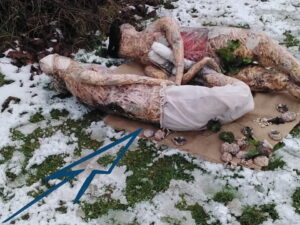
We began work with Alison Little in 2016 when we first launched our In:Visible Women programme. A Liverpool based artist, activist and educator, Alison’s work layers texture and printed evidence against abuse and empowerment.
Following on from the in memoriam work the Festival did with Eavan Boland’s poem Quarantine in 2020, Alison has created a visual response to this work. Working with physical materials to draw on the emotional experiences of the people within the poem, and the millions they have come to represent. We are presenting this work on St Brigid’s day as a female led-work, but also as a story that connects with St Brigid’s work for equality, as we continue to stave off disease, work together as a society to cure our ills and come to understand our history.
What we present below is a short ‘making of’ gallery of Alison’s process, making the installation, followed by images of the installation ‘in the field’, in both the snow and wet of January weather.
Alison’s work is all the more poigniant having fought off Coronavirus herself, but who lost her partner to the virus. Our condolences go to her and their loved ones and our thanks go Alison for her courage, creativity and commitment.
You can hear and read Eavan Boland’s Quarantine. here.
Installation: Quarantine – An Artist’s statement
Installation: Quarantine reflects the poem; Quarantine, from the late Eavan Boland. Two, rather soiled, life size figurines [made] from polythene [and] brimming with printed media, represent man and wife. Using related working techniques to that of Jane (produced for the 2017 Liverpool Irish Festival), the forms contain printed statements, statistics and quotes from the literal work: Quarantine. These quotes identify that 20-25% of Ireland’s population was lost to the Famine and related emigration. Further statements reflect on the fact that there was no ban on the export of food, as there had been in the famine of 1782-3. Additional found objects and additions include modelled blighted potatoes, manifesting the poem and the period of An Gorta Mór/The Great Famine.
‘Worst’ is repeated throughout the poem, highlighting the [desparation] of the late 1840’s. Black acrylic paint was applied, using flicking techniques across the inner of the polythene, to represent the anguish and distress the couple endured, [reflecting on] 1847 being titled ‘Black 47’, the worst year of the Famine. The leaving of the workhouse [has been] determined by printed replicas of discharge papers and statements included within the forms. Newspaper articles of the period, relating to the hardships and failing crops, [occupy] the bodies. Ragged clothing is prominent; [demonstrating] how workhouse conditions often meant that clothing was often re-used from those who died from fever and dysentry, without being laundered. The roll-up (cigarette) butts draw attention to how smoking tobacco was commonplace among the poor and labouring class during the Victorian era. This led to tooth decay; studies show that up to 80% of famine victims suffered from poor oral health. The empty bottle of whiskey is equally familiar; the Irish took the drink to the United States, through the period of mass emigration, due to the Famine. A rural location is suggested through the chain and shackle, habitual within farming communities.
Walking on foot -for a prolonged distance- is implied by uncomplicated shoe soles on the outer surfaces of the man’s feet; sufficiently degraded to push the concept of ‘Worn thin’ to the extreme. Women were often barefoot, her shoe soles not present. Hunger is simulated by the inclusion of modelled blighted Irish lumber potatoes. Created from potato clay, [these were] actually produced from flour and cornstarch, but the
named potato clay due to it’s mash-like qualities in production. Acrylic paints reinforce the idea of blight through the white areas. The potatoes situated around the wife’s breast identify with the female form. Fake foliage leaves with black speckles reflect the toxins of the times. Leaves are prominent around the groin, giving an indication of public hair and unquestionably the human form. The female form displays a kerchief; the male a cloth peak cap; both are well worn.The figures are positioned on the floor upon a sack cloth; woven and tattered. This forms the impression of being exposed to the elements; [the couple have lain] the sack cloth down as a blanket to protect from ground frost. Stones are added betwen the figures -at any exhibit- to represent their rough sleeping [and hardship].
The figures are [positioned to indicate/symbolide a] man and wife; an intertwining of hands and an evident physical connection. True to the poem, the wife’s feet are held against the husband’s breastbone; red papers represent the remnant of heat present in his body, whilst the white papers present the notion of frost [which has consumed] the female.
The making of Quarantine
To see a larger version, please click on the image.
Quarantine: the art work
To see a larger version, please click on the image.
Alison Little: Artist Statement
Alison Little is a visual artist and writer based in Liverpool. She looks to integrate her visual arts and creative writing practice. As an artist, she has worked on numerous commissions from Go Superlambananas to Kirby Town Centre Renewal. Her creative endeavours include the project management of Rags Boutique; a scheme to open a disused retail unit as an exhibition space and workshop venue.
Moving from County Fermanagh in the early 1960’s, to the UK mainland, Alison’s father came to Blackpool first then began working on the motorway systems which were being constructed at the time. He began painting the lines and eventually relocated in the South East, where Alison was born. She has links to family across the area and routes back to when many emigrated to the USA in the 1840’s.
Endeavouring to fuse her creative practices, Alison often illustrates her writings or identifies analogous matter as the focal point for later works. Rape, mental health, impotency and feminist concerns are scrutinised repeatedly; the creation of sculptural form to the penning of adjoining flash fiction, poetry and short stories. Through this, she amalgamates intense personal experiences and fact-based research, identifying with various philosophies and scientific predictions. The outcome is predominantly sculpture and conceptual photography, with varied writing and scripture. More recent works, such as Tittle-Tattle, look to question concepts around homemaking, cleanliness and marriage. Alison provokes through practice, creating a vast array of outcomes.
In 2017 she produced Jane for the In:Visible Women conference at the Liverpool Irish Festival. The installation was accompanied by a shorter fiction work, which was read at the event. The artform and literary piece tied to the Repeal the Eighth Amendment movement, a pro-[choice] movement, which lead to the successful repeal by referendum in 2018.
Alison has had a personal struggle with Covid-19 throughout 2020, succumbing to the virus in late March 2020, which spread to her partner, who was lost to Covid-19, 8 March 2020. After his funeral, the virus re-surged and Alison became ill again. In late August, she suffered a second infection and was to experience the sickness again. Due to lock down -and the almost complete suppression of the creative industries- she has struggled to find work as an artist throughout the year. Mentally, in terms of wellbeing, Alison is now ready to produce new creative works.
Alison has had work published in Hidden Gems, that art in Liverpool website, Dwell Time and Red Brick Writing, in addition to numerous zines. Her blog; alisonlittleblog.wordpress.com is well-read and she releases a weekly article.
Alison is an artist, a writer, creative explorer.
This work was funded by the Irish Government‘s Emigrant Support Programme‘s creative community fund.
#CreativeCommunity
Since the onset of Covid-19, cultural organisations and artists have suffered a lack of creative opportunities because of restrictions on arts venues and engagements. #CreativeCommunity is a once-off initiative by the Embassy of Ireland to Great Britain, the Consulate General of Ireland (Cardiff), and the Consulate General of Ireland (Edinburgh) that provided creative opportunities for Irish artists living in Britain to produce cultural content, shared online. Through Creative Community, the Embassy of Ireland in London and the Consulates General in Edinburgh and Cardiff have supported arts and culture-focused projects with eight organisations, directly engaging with at least 40 Irish creatives across Britain to produce and show their work.
The artists Liverpool Irish Festival has commissioned using this programme, include: Cathy Carter / Andrew Connally / Edy Fung (via Art Arcadia) / Alison Little / Maz O’Connor / Ciara Ní É / The Sound Agents. The links will take you to the individual commissions.
